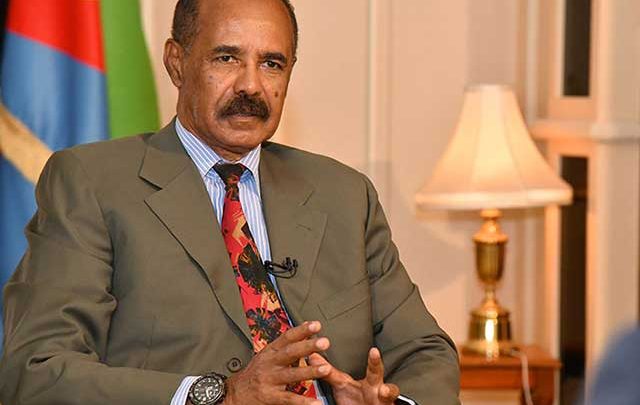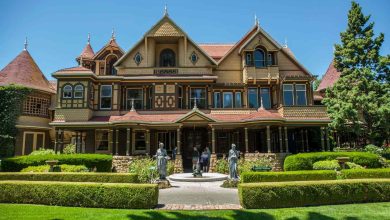Top 10 Dictators in the World Today

Isaias Afewerki is the greatest dictator of our time, ruling through fear and cruelty. Here is a list of the top ten dictators in the world today, including Kim Jong-un of North Korea, Omar al-Bashir of Sudan, and Robert Mugabe of Zimbabwe.
These dictators hold power through repression and control, leading to human rights abuses and suffering for their citizens. Military dictatorship is most common in developing nations in Africa, Asia, and Latin America. This article explores the current dictators and sheds light on their oppressive regimes.
1. Isaias Afewerki: The Fearful Dictator Of Eritrea
Background and rise to power: Isaias Afewerki has been the dictator of Eritrea since its independence from Ethiopia in 1993. He played a significant role in the liberation struggle against Ethiopia and emerged as the country’s first president. However, over the years, his regime has become known for its authoritarian rule and suppression of political dissent.
Brutality and human rights abuses: Afewerki’s dictatorship is characterized by extreme brutality and widespread human rights abuses. The government has been accused of arbitrary arrests, torture, forced labor, and enforced disappearances. Eritrea is often referred to as the “North Korea of Africa” due to its repressive regime.
Current status and international response: Despite international condemnation, Afewerki remains in power and has managed to silence opposition voices through strict control over the media and civil society. Eritrea is often ranked as one of the most politically oppressive countries in the world. Various human rights organizations have called for action to address the ongoing abuses under Afewerki’s rule.
| Title | Source |
|---|---|
| Dictator – Wikipedia | https://en.wikipedia.org/wiki/Dictator |
| Top Ten Most Evil Dictators of All Time (in order of kill count) | https://www.juancarlos.name/prompt/228-10-most-evil-dictators |
| Military dictatorship – Wikipedia | https://en.wikipedia.org/wiki/Military_dictatorship |
2. Kim Jong-un: North Korea’s Third Generation Dictator
Kim Jong-un, the current dictator of North Korea, inherited his position from his father and grandfather, making him the third generation of the Kim family to rule the country. His family legacy has played a crucial role in consolidating his power and maintaining the dictatorship in North Korea. He has also been known for his nuclear ambitions, which have had significant implications for international relations. The development of nuclear weapons by the North Korean regime has created tensions with other countries and raised concerns about global security. However, while the regime focuses on its militaristic agenda, it has had a devastating impact on the North Korean people. The population has suffered from severe human rights abuses, famine, and limited access to basic necessities. The regime’s oppressive policies continue to oppress and subjugate the North Korean people.
3. Omar Al-bashir: Sudan’s Long-standing Dictator
- Omar al-Bashir, the controversial leader of Sudan, has been in power since 1989.
- He gained control through a military coup and has maintained a strong grip on the country ever since.
- Under al-Bashir’s rule, Sudan faced widespread human rights abuses, including the notorious Darfur genocide.
- The International Criminal Court (ICC) issued indictments against him for war crimes, crimes against humanity, and genocide.
- In 2019, al-Bashir was overthrown by a popular uprising and has since faced trial for corruption.
- Sudan is now undergoing a transitional period, with hopes for a more democratic future.
4. Robert Mugabe: Zimbabwe’s Controversial Dictator
| Dictator | Country |
| Omar al-Bashir | Sudan |
| Kim Jong-il | North Korea |
| Than Shwe | Burma |
| Robert Mugabe | Zimbabwe |
| Islam Karimov | Uzbekistan |
| Hu Jintao | China |
| King Abdullah | Saudi Arabia |
| Saparmurat Niyazov | Turkmenistan |
Robert Mugabe, Zimbabwe’s controversial dictator, holds a prominent place on the list of top dictators in the world today. Mugabe’s early years were marked by his involvement in the liberation struggle against white minority rule in Zimbabwe. He played a leading role in advocating for land reform, which was meant to rectify historical injustices caused by colonization. However, this land reform led to economic collapse and widespread corruption in the country. Mugabe’s resignation in 2017 sparked both relief and uncertainty about the future of Zimbabwe. The aftermath of his reign has been met with ongoing political challenges and efforts to rebuild the nation.
5. Than Shwe: Burma’s Iron-fisted Leader
| Top 10 Dictators in the World Today |
| 5. Than Shwe: Burma’s Iron-Fisted Leader |
Than Shwe, the former military general who ruled Myanmar for over two decades, is notorious for his iron-fisted dictatorship. As the head of the military junta, he maintained tight control over the country, suppressing both opposition parties and ethnic minorities. His regime was marked by human rights abuses and political repression. Despite this, recent years have seen some democratic reforms in Myanmar, including the release of political prisoners and the establishment of a civilian government. However, the country still faces numerous challenges in its path towards full democracy. The transition from military rule to a civilian-led government remains fragile, and the military continues to wield significant power and influence.

Credit: www.kobo.com
6. Islam Karimov: Uzbekistan’s Authoritarian Ruler
| Top 10 Dictators in the World Today | |
|---|---|
| 6. Islam Karimov: Uzbekistan’s Authoritarian Ruler | |
|
Consolidation of power and human rights abuses: Islam Karimov, the late president of Uzbekistan, ruled the country with an iron fist for over 25 years. His regime was marked by a consolidation of power and widespread human rights abuses. Dissent was not tolerated, and political opponents were silenced through imprisonment, torture, and forced disappearances. Economic policies and international relations: Karimov’s rule was characterized by a focus on economic stability and self-reliance. However, his policies often favored the elite, leading to widespread corruption and economic inequality. Despite this, he maintained close relations with Russia and the United States, balancing between the two superpowers. Succession crisis and political landscape: Following Karimov’s death in 2016, the country faced a succession crisis. His successor, Shavkat Mirziyoyev, has implemented some reforms, but the authoritarian nature of the regime remains. |
|
7. Hu Jintao: China’s Unofficial Dictator
|
7. Hu Jintao: China’s Unofficial Dictator Under the Communist Party rule and centralization of power, Hu Jintao can be considered as China’s unofficial dictator. His government has faced numerous human rights concerns and censorship activities, suppressing freedom of speech and expression. The impact of his regime on Chinese society has been significant, with the consolidation of power in the hands of the Communist Party and limited scope for political dissent. There are concerns regarding the future leadership transition in China and how it might affect the country’s political landscape. As a result, Hu Jintao is regarded as one of the top dictators in the world today, exerting control over the world’s most populous nation. |
8. King Abdullah: Saudi Arabia’s Powerful Monarch
King Abdullah of Saudi Arabia holds immense power as the country’s monarch, making him one of the top dictators in the world today.
| Omar al-Bashir | Sudan |
| Kim Jong-il | North Korea |
| Than Shwe | Burma |
| Robert Mugabe | Zimbabwe |
| Islam Karimov | Uzbekistan |
| Hu Jintao | China |
| King Abdullah | Saudi Arabia |
| Saparmurat Niyazov | Turkmenistan |
9. Saparmurat Niyazov: Turkmenistan’s Eccentric Dictator
|
9. Saparmurat Niyazov: Turkmenistan’s Eccentric Dictator |
Saparmurat Niyazov was the eccentric dictator of Turkmenistan. He built a cult of personality around himself, implementing oppressive policies and suppressing political dissent. Niyazov ruled with an iron fist, exerting strict control over all aspects of Turkmen society.
One of Niyazov’s main sources of power was Turkmenistan’s gas export revenues. He exploited the country’s vast natural gas reserves to develop the economy and maintain his grip on power. However, this dependency on gas exports made Turkmenistan vulnerable to fluctuations in global energy markets.
The issue of succession and Niyazov’s political future was a source of concern during his reign. He did not establish a clear line of succession, which led to speculation and uncertainty about the country’s leadership after his death.
Overall, Niyazov’s rule was marked by a combination of eccentricity, oppression, and economic dependence on gas exports. His legacy continues to impact Turkmenistan to this day.
10. Others Dictators: Notorious Leaders Around The World
Explore the dark realm of dictatorship with ’10. Others Dictators: Notorious Leaders Around the World’. Discover the top 10 dictators currently ruling the world, including infamous figures like Isaias Afewerki and Kim Jong-un, whose reigns are defined by fear and cruelty.
Uncover the shocking realities of these despotic regimes that continue to grip nations in their ironclad fists.
| Omar al-Bashir | Sudan |
| Kim Jong-il | North Korea |
| Than Shwe | Burma |
| Robert Mugabe | Zimbabwe |
| Islam Karimov | Uzbekistan |
| Hu Jintao | China |
| King Abdullah | Saudi Arabia |
| Saparmurat Niyazov | Turkmenistan |
Conclusion
In the world today, there are numerous dictators who have gained notoriety for their tyrannical rule. From Isaias Afewerki’s reign of fear and cruelty to Kim Jong-un’s oppressive regime in North Korea, these dictators have caused immense suffering to their people.
It is important to remain vigilant and be aware of the atrocities committed by these individuals. By shedding light on their actions, we can work towards a future free from dictatorship and oppression. Let us stand together and strive for a world where freedom and human rights are valued above all else.





